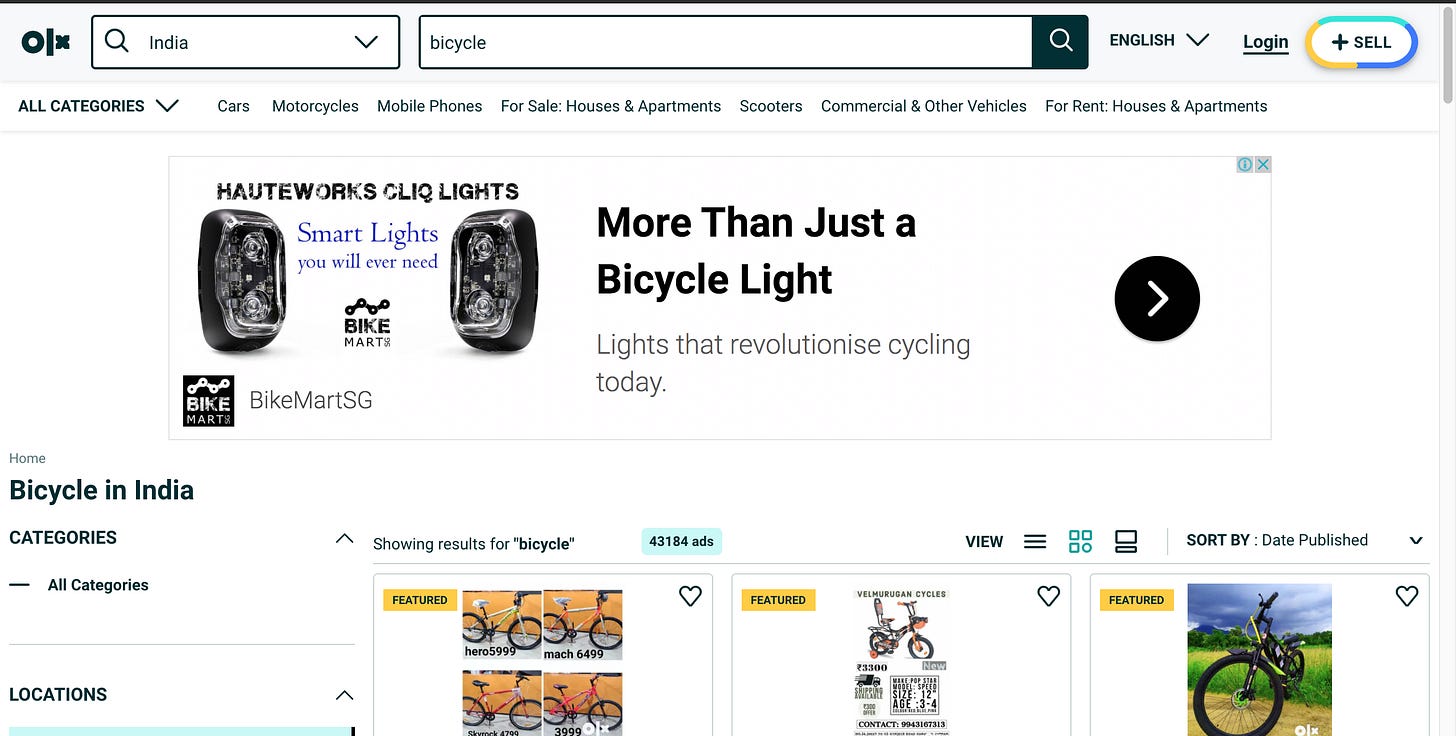#23 How do used-good marketplaces like Olx & Carousell make money?
They don't earn by the typical marketplace commission model
Dear reader, If you found value from the regular editions, I would greatly appreciate it if you could share the newsletter with your network. You can click here to tweet about it. If you stumbled across this directly, you can find the previous editions here and subscribe to receive a weekly copy in your mailbox!
Olx
OnLine eXchange, also known as OLX Group is a platform for buying and selling services and goods such as electronics, fashion items, furniture, household goods, cars and bikes. The company was found in 2006 and has its roots in Argentina. South African media group Naspers acquired a majority of OLX in 2010 and 95% of the company in 2014. Olx currently operates in 45 countries including India, Pakistan, Nigeria, Brazil, Kenya. Olx has strategically acquired other used-good marketplaces like Jiji.ng & dubizzle.com. In Singapore, Carousell acquired OLX Philippines after receiving an investment from Naspers. The deal also gave OLX a 10% stake in Carousell.

How do used-goods marketplaces like Olx & Carousell work
Olx operates as a 2-sided marketplace between buyers and sellers of used goods.
Sellers upload pictures of their goods, along with a title and description of the same and the expected sales price of the commodity. The buyers are allowed to browse through the several alternatives, contact the seller, negotiate with them one-to-one, and then purchase the item.
The surprising fact is that OLX doesn’t act as a liaison between the buyer and the seller. It acts as a mere catalyst for connecting the two online through a classifieds portal. The conversation, bargaining, advances, and transactions remain between the buyer and seller only. OLX spends large amounts of money in order to garner user traffic and greater frequency and number of listings. The high traffic is put to use to earn revenue by monetizing the number of clicks and searches.
How do used-goods marketplaces make money?
A typical marketplace model is to earn money from transactions or affiliates. eg. Airbnb takes a % of all the bookings made on its platform. Skyscanner earns through affiliate marketing for all bookings driven by the aggregator. Uber takes a % of all the bookings made on its platform. Similarly, Fiverr takes a % of the earnings made by the freelancers on the platform.
Unlike other marketplaces, Olx does not charge a % of the transaction or affiliate fees. Why not? If Olx was to charge a % of the transaction:
Buyers and sellers will use Olx for discovery and then drop-out of the platform to complete the transaction. This would result in leakage in the marketplace.
For faulty or poor quality goods, the buyers would need more accountability from Olx.
Olx makes its revenue from both buyers and sellers. It shows targeted Advertisements to buyers who are browsing the website/app and charges Sellers for sponsored listings.
Contextual Advertisement based on buyer search
Carousell/Olx make the majority of their revenues through advertisement. This helps them monetize the millions of users sessions every month. Also, these ads are targeted based on what the user is searching for. In the below image, when you search for used bicycles, Google serves you in-app ads regarding bicycle products.

Sponsored Listings
Similar to promoting a post on social media to reach a wider audience, the buyers can promote their listings to reach a higher audience. The cost of the promotion varies depending on the category of the product being sold. Low-cost items like clothes, electronics, etc. have a lower cost of promotion compared to used cars or real estate.

Fun Fact
Alec Oxenford, the co-founder of Olx, later went on to start Letgo, an Olx and Craigslist competitor in the US. In less than 5 years, letgo achieved the unicorn status ($1B in valuation) and in 2020 was acquired by OfferUp.
For more such content, follow me on Twitter.
If you stumbled across this post and would like to receive a weekly article about innovative business models, subscribe now!



